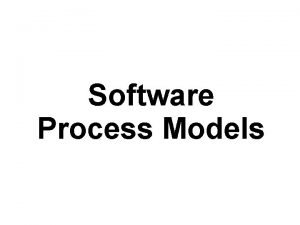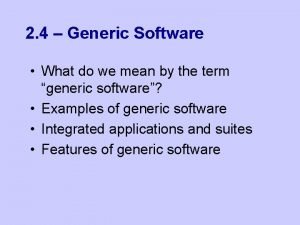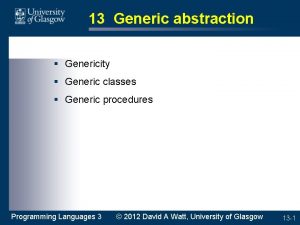Chapter 1 2 Generic software and custom software



- Slides: 3

Chapter 1. 2 - Generic software and custom software Question 1. 2 - What is the most important difference between generic software product development and custom software development? . What might this mean in practice for users of generic software products? -page 42 of 10 th edition (referred to as Sommerville). 1. Generic products- These are stand-alone systems that are produced by a development organization and sold on the open market to any customer who is able to buy them. e. g. mobile apps, software for PCs such as databases, word processors, drawing packages, and project management tools. 2. Customized (or bespoke) software systems that are commissioned by and developed for a particular customer. e. g. software including control systems for electronic devices, systems written to support a particular business process, and air traffic control systems. The critical distinction between these types of software is that, in generic products, the organization that develops the software controls the software specification. This means that if they run into development problems, they can rethink what is to be developed.

Chapter 1. 2 - Generic software and custom software More systems are now being built with a generic product as a base, which is then adapted to suit the requirements of a customer e. g. Enterprise Resource Planning (ERP) systems, such as systems from SAP and Oracle, are the best examples of this approach.

Chapter 1. 2 - Generic software and custom software These generic and custom software must meet these attributes : a) Acceptability- This means that it must be understandable, usable, and compatible with other systems that they use. b) Dependability and security- Software dependability includes a range of characteristics including reliability, security, and safety. Dependable software should not cause physical or economic damage in the event of system failure. Software has to be secure so that malicious users cannot access or damage the system. c) Efficiency- Software should not make wasteful use of system resources such as memory and processor cycles. Efficiency therefore includes responsiveness, processing time, resource utilization. d) Maintainability- Software should be written in such a way that it can evolve to meet the changing needs of customers. This is a critical attribute because software change is an inevitable requirement of a changing business environment.





